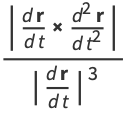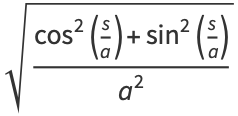In general, there are two important types of curvature: extrinsic curvature and intrinsic curvature. The
extrinsic curvature of curves in two- and
three-space was the first type of curvature to be studied historically, culminating
in the Frenet formulas, which describe a space
curve entirely in terms of its "curvature," torsion,
and the initial starting point and direction.
After the curvature of two- and three-dimensional curves was studied,
attention turned to the curvature of surfaces in three-space. The main
curvatures that emerged from
this scrutiny are the mean curvature, Gaussian
curvature, and the shape operator. Mean
curvature was the most important for applications at the time and was the most
studied, but Gauss was the first to recognize the importance of the Gaussian
curvature.
Because Gaussian curvature is "intrinsic," it is detectable to two-dimensional "inhabitants" of the surface, whereas
mean curvature and the shape
operator are not detectable to someone who can't study the three-dimensional
space surrounding the surface on which he resides. The importance of Gaussian
curvature to an inhabitant is that it controls the surface area
of spheres around the inhabitant.
The simplest form of curvature and that usually first encountered in calculus is an extrinsic curvature. In two dimensions,
let a plane curve be given by Cartesian parametric equations

and

. Then the curvature

, sometimes
also called the "first curvature" (Kreyszig 1991, p. 47), is defined
by
where

is the tangential
angle and

is the arc
length. As can readily be seen from the definition, curvature therefore has units
of inverse distance. The

derivative in the above equation
can be found using the identity
so
 |
(8)
|
and
Combining equations (◇), 3), (10),
and (12) then gives
 |
(13)
|
For a two-dimensional curve written in the form

, the equation
of curvature becomes
![kappa=((d^2y)/(dx^2))/([1+((dy)/(dx))^2]^(3/2)).](http://mathworld.wolfram.com/images/equations/Curvature/NumberedEquation3.gif) |
(14)
|
If the two-dimensional curve is instead parameterized in polar
coordinates, then
 |
(15)
|
where

(Gray 1997, p. 89).
In pedal coordinates, the curvature is given
by
 |
(16)
|
The curvature for a two-dimensional curve given implicitly by

is given
by
 |
(17)
|
(Gray 1997).
Now consider a parameterized space curve

in three dimensions
for which the tangent vector

is defined as
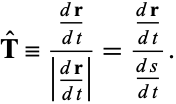 |
(18)
|
Therefore,
where

is the normal vector.
But
so taking norms of both sides gives
 |
(24)
|
Solving for

then gives
(Gray 1997, p. 192).
The curvature of a two-dimensional curve is related to the radius of curvature of the curve's osculating circle.
Consider a circle specified parametrically by
 |
(28)
|
 |
(29)
|
which is tangent to the curve at a given point. The curvature is then
 |
(30)
|
or one over the radius of curvature. The curvature of a circle can also be repeated in vector notation. For
the circle with

,
the arc length is
so

and the equations of the circle
can be rewritten as
 |
(34)
|
 |
(35)
|
The radius vector is then given by
 |
(36)
|
and the tangent vector is
so the curvature is related to the radius of curvature

by
as expected.
Four very important derivative relations in differential geometry related to the
Frenet formulas are
where

is the tangent
vector,

is the normal
vector,

is the binormal
vector, and

is the torsion
(Coxeter 1969, p. 322).
The curvature at a point on a surface takes on a variety of values as the plane through the normal varies. As

varies, it
achieves a minimum and a maximum (which are in perpendicular directions) known as
the principal curvatures. As shown in Coxeter
(1969, pp. 352-353),
 |
(47)
|
 |
(48)
|
where

is the Gaussian
curvature,

is the mean
curvature, and det denotes the determinant.
The curvature

is sometimes called the first curvature
and the torsion

the second curvature.
In addition, a third curvature (sometimes called
total curvature)
 |
(49)
|
is also defined. A signed version of the curvature of a circle appearing in the Descartes circle theorem
for the radius of the fourth of four mutually tangent circles is called the bend.
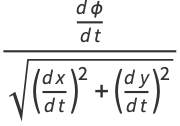
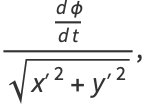

![kappa=((d^2y)/(dx^2))/([1+((dy)/(dx))^2]^(3/2)).](http://mathworld.wolfram.com/images/equations/Curvature/NumberedEquation3.gif)


